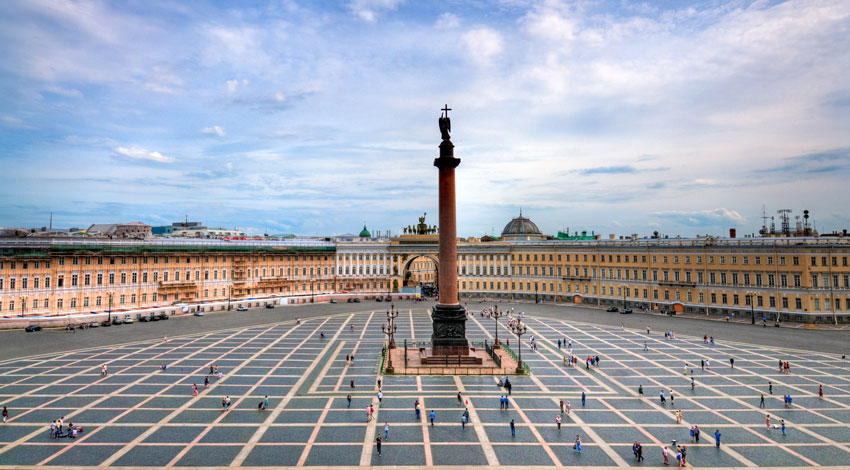Discover Jubilee Italy: Celebrating Tradition and Faith
Every 25 years marks the Italian Jubilee, which is a Catholic celebration that focuses on forgiveness, renewal, and celebration. Jubilee Italy 2025 is a historic event taking place at the end of the year and the beginning of the following year, where tens of millions of people are expected to make the pilgrimage to Rome and the Vatican.
For tourists, this means planning Italy tours far in advance to beat the crowds and high prices for lodging, accommodations and transportation that are expected to follow. This monumental event offers an exciting opportunity to explore your faith and local Italian traditions in an unforgettable, authentic way.

In this guide, we unpack everything you need to know about the Jubilee Year in Italy, including what it is, the history of the Jubilee in Italy, what to expect, and more. Use this guide to prepare yourself for the immersive celebrations to follow and understand what makes this cultural celebration so significant.
What Is the Jubilee in Italy?
So, what is the Jubilee in Italy? The Italian Jubilee, also known as the Holy Year, is both a cultural and spiritual celebration that takes place every 25 years in Rome and Vatican City. Jubilee Italy 2025 commences on December 24, 2025, and ends on Epiphany, the 6th of January, 2026. The Vatican is anticipating over 32 million pilgrims to make the journey to Rome and Vatican City in search of spiritual renewal and a closer connection to their faith.
During the Jubilee Year in Italy, special events and pilgrimages take place throughout the Vatican and Italy. However, most celebrations take place at four major basilicas: St. Peter’s Basilica, St. John Lateran, St. Mary Major and St. Paul Outside the Walls. The theme of Jubilee Italy 2025 is “Pilgrims in Hope,” which is expected to draw significant attention following the recent papal conclave at the Sistine Chapel, during which United States-born Robert Francis Prevost was elected as Pope, taking the throne of St. Peter and the name Leo XIV. The Holy Doors of the four basilicas, typically sealed during non-Jubilee years, will be open to celebrate special religious events, Masses and processions.
It’s important to note that Jubilees aren’t strictly held every 25 years. In some cases, the Pope may declare an extraordinary Jubilee, such as in 2015-2016 when Pope Francis declared an Extraordinary Jubilee of Mercy for the 50th anniversary of the end of the Second Vatican Council. The theme of that Jubilee was mercy, during which Pope Francis created the Missionaries of Mercy, a group of priests granted the power to forgive sins typically reserved for the Holy Father.
The Italian Jubilee Through the Centuries
The Jubilee in Italy holds significant spiritual meaning for Catholics who flock to the region to partake in this momentous occasion. To understand the significance of the Italian Jubilee, let’s take a closer look at some of the previous Jubilee years in Italy:
- 1300: The First Jubilee, held in 1300, marked the time when Boniface VIII promised a plenary indulgence to Romans who made 30 pilgrimages to the basilicas of St. Peter and St. Paul in Rome within the year, as well as to visiting pilgrims who completed 15 pilgrimages by year’s end.
- 1350: Clement VI declared a Jubilee during the Black Death due to requests to bring the Apostolic See, or central governing body of the Church, back to Rome.
- 1475: Proclaimed by Paul II but presided over by Sixtus IV, the 1475 Jubilee set the precedent of visiting the basilicas of St. Peter, St. Paul, St. John Lateran and St. Mary Major, with celebrations occurring every 25 years.
- 1500: Alexander VI envisioned Jubilees as featuring an impactful event, prompting him to set the tradition of opening a Holy Door during Jubilee Years and keeping them bricked up in between.
- 1625: Urban VIII extended the Jubilee indulgence for those unable to visit Rome, including prisoners and the sick, as the plague was spreading throughout the city.
- 1750: The Jubilee of 1750 was one of the largest in history at the time, with over a million pilgrims flocking to Rome from as far away as the West Indies, Egypt and Armenia. During this Jubilee, St. Peter's dome and Bernini's Colonnade were lit up by thousands of torches.
- 1825: Pope Leo XII led the Jubilee of 1825 with the goal of strengthening the bond between the Pope and the Christian people.
- 1950: The Holy Year under Pope Pius XII had a theme of redemption and spiritual renewal after WWII, serving as a chance for people to heal and return to faith.
- 1975: The Holy Year under Pope Paul VI was dedicated to reconciliation and was the first Jubilee to be broadcast worldwide.
- 2000: The Great Jubilee of the Year 2000 celebrated 2,000 years of Christianity, serving as a massive global event at the turn of the century.
What to Expect During Jubilee Italy 2025
Whether you’re planning a Central Italy tour or a Northern Italy tour during the Italian Jubilee, it’s important to know what to expect so you can prepare carefully. Visitors making the pilgrimage to Rome and Vatican City should expect large crowds in the range of 32 million travelers converging on the region. Yet, you can be assured that careful preparation has been going on behind the scenes for well over a year to ensure a comfortable and safe visit.
Once arriving in Italy, the Opening of the Holy Doors will occur at the four major basilicas, including St. Peter’s, St. John Lateran, St. Paul Outside the Walls and St. Mary Major. Here, plenary indulgences will be available to those who meet certain requirements, including confession, communion, prayer and pilgrimage. With daily Masses and spiritual talks, along with special events for youth, families, the sick and more, there are plenty of opportunities for visitors to find a deeper connection to their faith.
The Legacy of the Italian Jubilee
The legacy of the Jubilee in Italy is both spiritual and cultural, with deep roots in the Catholic tradition, leaving lasting impacts on Rome and the entire world. Jubilee Italy 2025 is expected to be an inspiring event that renews focus on compassion and community. According to a recent Road Scholar survey, 57% of travelers prefer Italy, with 48% preferring local cultural performances and traditions, making a pilgrimage to the Italian Jubilee the perfect opportunity to enjoy a truly immersive and memorable experience, whether you’re Catholic or not. As you prepare for your adventure, review our travel tips for Italy to better understand what you should expect and how to ensure a safe and unforgettable journey.

